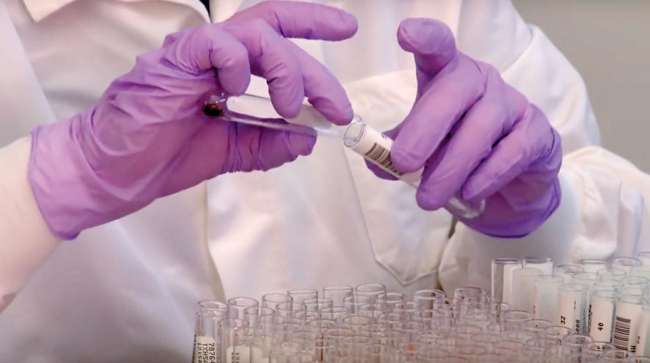Senior Reporter
HHS Issues Proposed Hair Testing Guidelines

[Stay on top of transportation news: Get TTNews in your inbox.]
The Department of Health and Human Services on Sept. 8 announced its long-delayed proposed mandatory guidelines to allow employers to drug test truck drivers and other federal workers for pre-employment and random testing using hair specimens.
However, the proposal also requires a second sample using either urine or an oral swab test if a hair drug test is positive, if a donor is unable to provide a sufficient amount of hair for faith-based or medical reasons, or due to an insufficient amount or length of hair.
In comments issued Sept. 9, American Trucking Associations President Chris Spear called the proposal “weak and misguided” and vowed to take ATA’s case back to Congress.
“As currently written, today’s proposal by HHS on hair testing is a tremendous disappointment for the trucking industry,” Spear said. “President Trump and his administration have successfully tackled difficult, contentious regulatory challenges with environmental and labor issues, yet on a top-tier priority for highway safety, the administration allowed HHS to deliver a weak and misguided proposal more than three years late.”
HHS Hair Rule by Transport Topics
The proposal, which was published in the Federal Register on Sept. 10, specifically requires that the second test be done simultaneously at the collection event or when directed by the Medical Review Officer after review and verification of laboratory-reported results for the hair specimen. The agency said the two-test approach is intended to protect federal workers from issues that have been identified as limitations of hair testing, and related legal deficiencies identified in two prior court cases — one in Boston and the other elsewhere in Massachusetts — the announcement said.
“Both cases indicate that an employment action taken on the basis of a positive hair test alone, without other corroborating evidence, may be vulnerable to legal challenges,” the proposal said
Abigail Potter, manager of safety and occupational health policy for ATA, said the proposal defeats the purpose of the Department of Transportation drug testing program as a deterrent. “What HHS is saying is that because of these legal cases, hair testing cannot be used as an affirmative positive,” Potter said. “I am not aware of any case that where if a hair test is positive, has been overturned.”
A spokeswoman for the Owner- Operator Independent Drivers Association said, “The guidelines acknowledge the concerns OOIDA and others have shared regarding hair testing, including color and texture bias, higher costs, faith-based and medical reasons, or simply having an insufficient amount of hair. Given these issues and the lack of scientific evidence that hair testing will reduce crashes, we will continue opposing the pursuit of any hair testing mandates.”
HHS is specifically requesting comments on the proposal for 60 days after the Federal Register announcement, including support from recent peer-reviewed scientific literature, on advances in the science of hair testing that adequately address these limitations and elucidate the extent to which hair color, external contamination and other factors (e.g., hair treatments and hygiene) will affect hair tests and the interpretation of hair drug test results.

What are fleets doing to help attract the best possible diesel technicians to join the changing workforce environment? Host Michael Freeze speaks with Ken Boyer, dean of the Auto/Diesel Institute at Baker College, and Ralph Romero, vice president of talent management at U.S. Xpress. Hear a snippet, above, and get the full program by going to RoadSigns.TTNews.com.
The agency projects that approximately 1% of specimens tested per year (2,750 of 275,000) will be hair specimens. Hair has been used in nonregulated testing programs, including in the transportation and casino industries when longer detection periods may be needed, the announcement said.
“Hair and urine pre-employment test results have been shown to be somewhat dissimilar because each matrix has a different time window of drug detection,” HHS said. “Typically, positivity rates are higher in hair due to hair’s longer window of detection.”
However, the agency said numerous factors influence the amount of drug incorporated into hair, including drug dose, length of exposure, physical and chemical properties of hair and factors associated with the chemical structure of the drug. “Of concern are environmental contamination, the impact of natural hair color on drug incorporation, and the effects of hygiene and cosmetic hair treatments,” HHS said.
The agency said hair testing is not an appropriate specimen to detect recent use and is not an appropriate specimen for post-accident and reasonable-suspicion testing. The congressional mandate for the hair test rule was contained in the FAST Act. The bill was signed into law by President Barack Obama in December 2015, but the mandate has been delayed for more than four years.
“The real tragedy of this entire debate is that carriers currently using hair testing can’t share their success with the broader industry because hair testing isn’t a DOT-recognized testing method, meaning the results do not get uploaded into the Clearinghouse,” said Sean Garney, vice president of Scopelitis Transportation Consulting. “In fact, if the proposal was finalized as written and was authorized by DOT for use in the trucking industry, it could act as a disincentive to hair testing use.”
Want more news? Listen to today's daily briefing:
Subscribe: Apple Podcasts | Spotify | Amazon Alexa | Google Assistant | More

